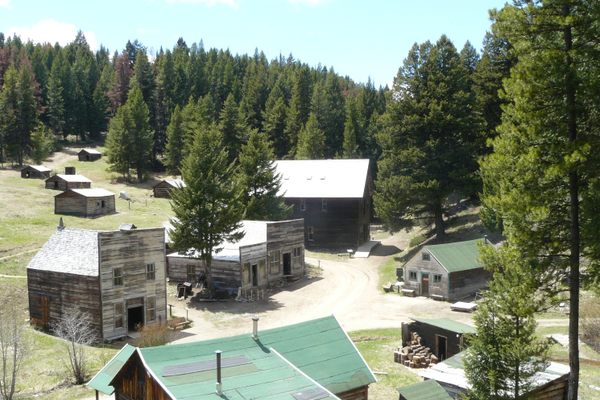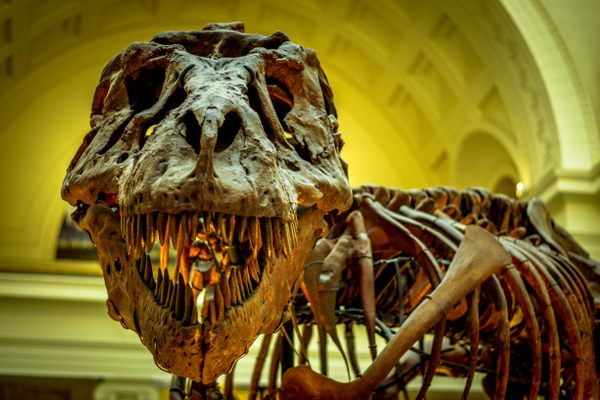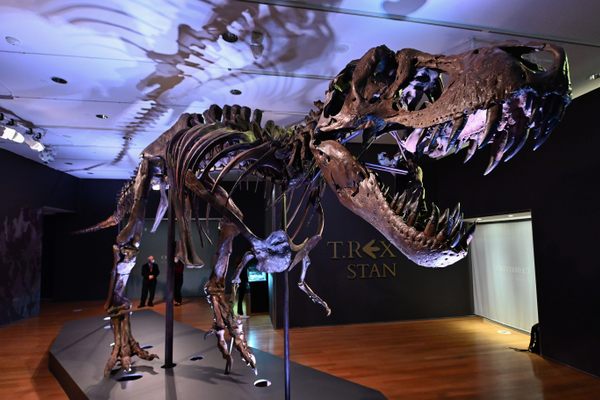Found: Possible Traces of DNA, in a Fossilized Dino Skull
This ancient hadrosaur has some microscopic secrets.
In the Late Cretaceous period, near what is now the border of Montana and Canada, a baby duck-billed Hypacrosaurus keeled over and died. Seventy-five million years later, in the 1980s, the nestling’s skull fragments were unearthed by the famed paleontologist Jack Horner, then at the Museum of the Rockies; his son, Jason; and bone preparator Carrie Ancell. Once they arrived at the museum, the fragments were ground down and put on slides for further research, then tucked away.
“They were left in a box for over 20 years,” writes Alida Bailleul, a postdoctoral researcher at the Institute of Vertebrate Paleontology and Paleoanthropology in Beijing and lead author of a new paper on the fragments, published in the journal National Science Review, via email.
Back in 2010, she worked at the Museum of the Rockies, where her “research project was to analyze the bones of these hadrosaurs under the microscope. And that’s when I saw these cells and chromosomes.”

Now, 30 years after the discovery, Bailleul and colleagues have identified cartilage that still retains proteins and nuclear material from the dinosaur. If the identified material is genetic, it will push back the earliest known DNA by many leaps. The oldest sequenced DNA to date comes from a 700,000-year-old horse frozen in Siberian permafrost. This potential genetic material from the Hypacrosaurus would be over 100 times older.
Dinosaur fossils are often characterized by their obvious characteristics: their color, somewhere between dusty chocolate and tar, and their huge size, with ribs so big they’d squash any barbecue grill and gaping maws filled with teeth that dwarf our own. But all that ossified bone fossilizes entirely, way beyond what’s visible to the naked eye.
Histologists—experts in miniscule tissues—can see where blood cells were in dinosaur bones, and can say how fast the creatures grew each year. Now, researchers say they can see even smaller structures than blood cells.
Bailleul’s team found the cells, possible nuclei, and chromosomes by staining the microscopic dinosaur bits with two chemicals that bind to elements of nuclear material, vividly colorizing them. Those elements—stained in similar fashion to modern emu remains the team tested—uphold the idea that the Hypacrosaurus retained some of its itsy-bitsy building blocks.

The next steps, Bailleul says, will be for researchers to better understand how these microstructures fossilize—how they change in the process of fossilization, their molecular signature. Only then can sequencing be considered. And even that’s a big “maybe.”
In other words, this won’t be the basis for a Jurassic Park screenplay. If anything, it’s a debunking of how that cloning process works.
“The general public should never, ever think that we can get an entire genome from a dinosaur, and clone it,” Bailleul writes. “We have absolutely zero intentions—nor the power—to ever re-create a dinosaur. I love Jurassic Park, but it is way too far from what we are doing here that I think any reference to this movie should really be made jokingly.”
In the case of dinosaurs, perhaps it’s best that art merely imitates life—rather than the other way around.

















Follow us on Twitter to get the latest on the world's hidden wonders.
Like us on Facebook to get the latest on the world's hidden wonders.
Follow us on Twitter Like us on Facebook